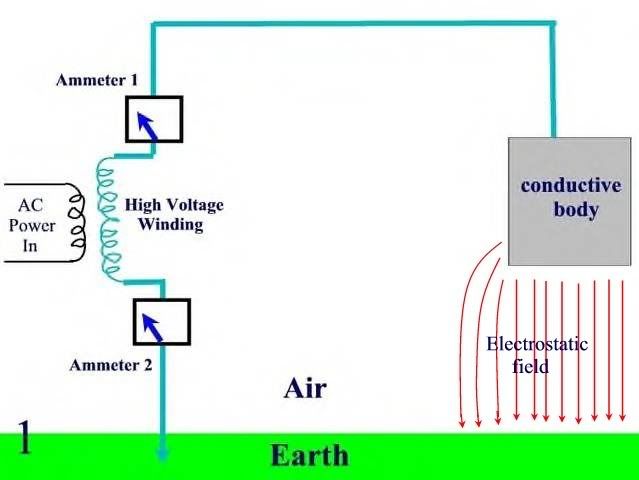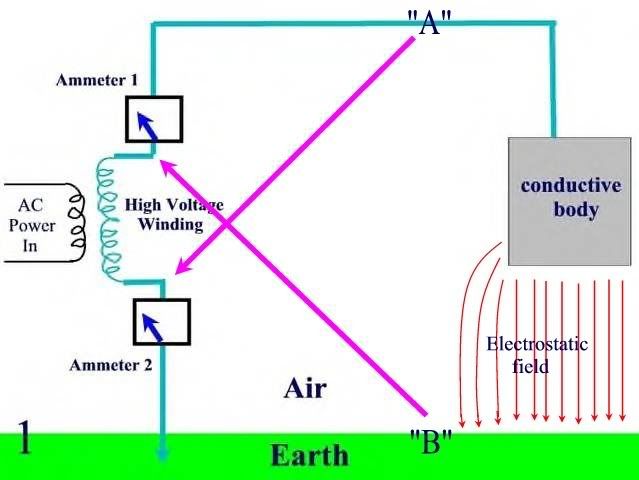crossman
Senior Member
- Location
- Southeast Texas
coulter said:Cause the majority will not rule here. This is a math model discussion. Opinion really doesn't matter.
You are right and I respect your opinion on that.
coulter said:Cause the majority will not rule here. This is a math model discussion. Opinion really doesn't matter.
cute:roll:crossman said:...I respect your opinion on that.
yep - probably Norton as welldbuckley said:.... Kirchoff would be annoyed if it were something else.
If the motion of one or more electrons within the wire creates enough of a magnetic field to ionize the air surrounding the wire, the charge itself does not leave any electron, and the electrons still move down the wire. There are no variables. Every electron that passes through ammeter #1 has no place on earth to go except through ammeter #2. The currents must be equal.ronaldrc said:. . . some of the charge that is leaking from the wire surface is being loss in making a ion field before it reaches the upper ammeter. I think there are to many variables for any body to give a accurate answer.
That would not change anything. The corona is formed within the air surrounding the wire, and no charge within the wire passes through the insulation into the surrounding air. All current still passes through every component in the series connection.steved said:How high is the voltage? Is it high enough to produce a corona discharge?

zog said:But some of the current in the field could return to the transformer directly instead of through ground
zog said:in fact based on your drawing I bet the R of the air to the transformer is close to or less than the resistance of the air to ground+ground (Entry point then back to the transformer).

zog said:Either way. as I stated earlier, this is not a simple series circuit, there are several different paths, therefore the ammeter #2 would read less than #1 just as it did when I actually performed this experiment.
Nope. Anytime I have observed "arcing" there was definitely a path - generally ionized air.zog said:...Have you ever actually observed this arcing between 2 different potentials with no path for current? ...
yes (and ...?)zog said:... Ever racked in/out a 30kV breaker or done any transmission line/substation work?
crossman said:Gentlemen, thank you for your replies and thoughts.
I also believe meter 2 will read close to 60 mA.
To the diagram above, I added the electrostatic field near the conductive body and earth. Now, the direction of the field is actually changing because this is an AC source. Of course I have not drawn all the field lines in. There are many more extending in many directions between other components. But I have drawn in the lines which I feel are most important to allow current to flow in the meters.
And I would say that without this field, that very little, if any, current could flow. If we had some type of material which could completely block the field, then no current (?or an extremely small amount from inductive coupling?) would flow at all.
The current flow in the circuit could be changed by changing the size of the conductive body, the current could be changed by changing the distance between the conductive body and earth, and, if we could, the current could also be changed by changing the size of the earth. My point is that the current flow would be controlled by the exact laws of physics which determine capacitance and capacitive current flow. But let me make it clear that any change in the circuit current flow would be seen at BOTH meters.
This is all very straight-forward and is supported by all Physics texts and electrical theory books I have ever studied.
Thanks again for the replies.

Edit: I want to be clear that the red lines are NOT actual electrons flowing. There is no arc in this case between the body and earth. This is an electrostatic field.
ronaldrc said:I would think amp. meter #2 would be a little higher since where dealing with high voltage and some of the charge that is leaking from the wire surface is being loss in making a ion field before it reaches the upper amp. meter .I think there are to many varibles for any body to give a accurate answer.

